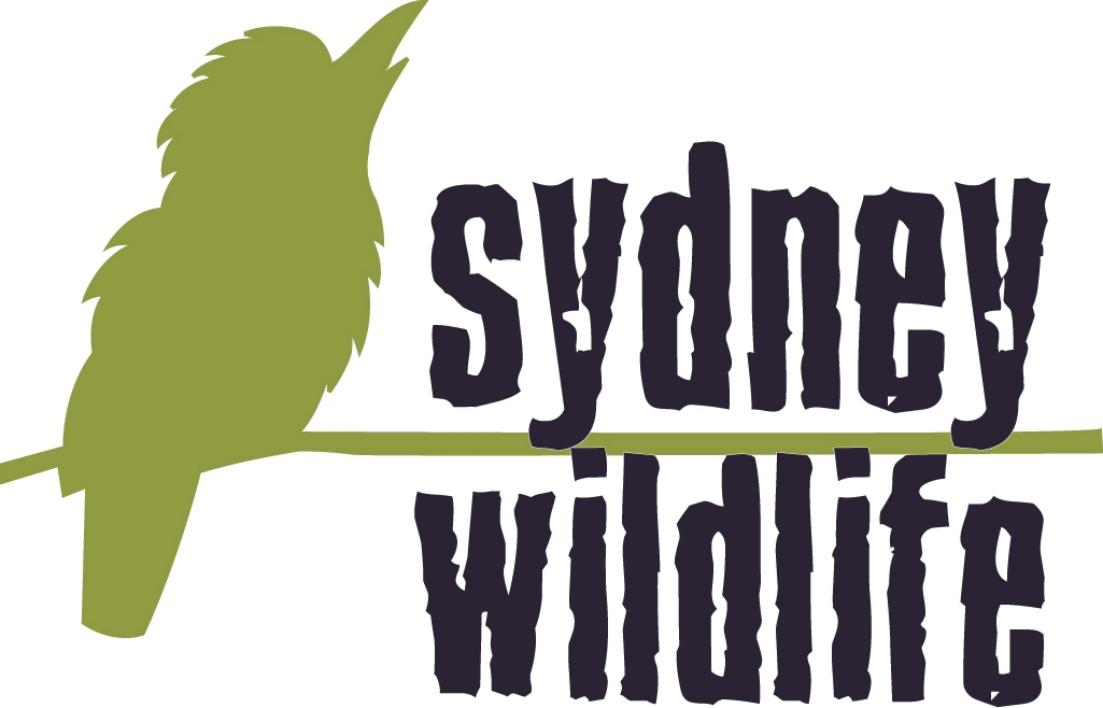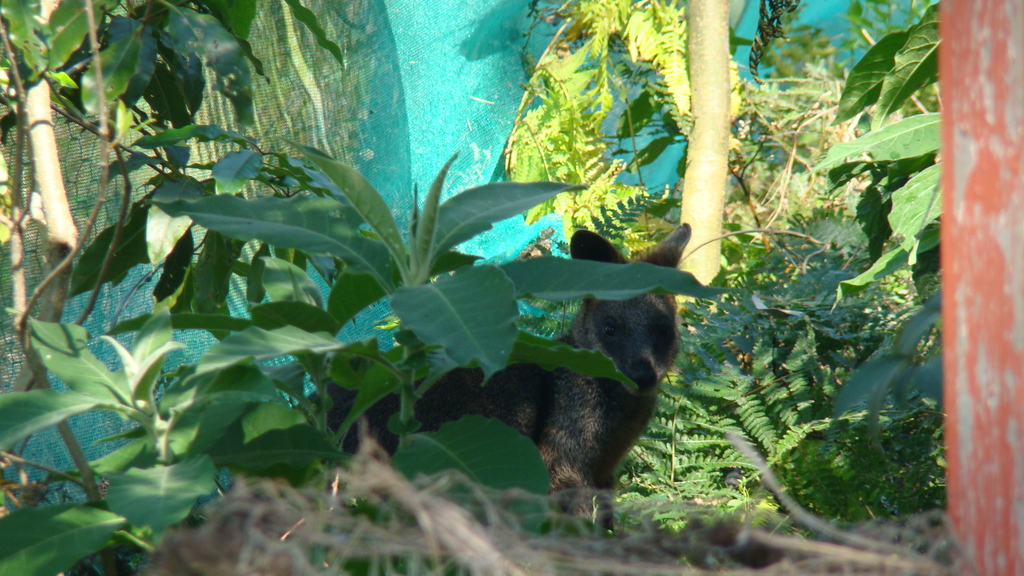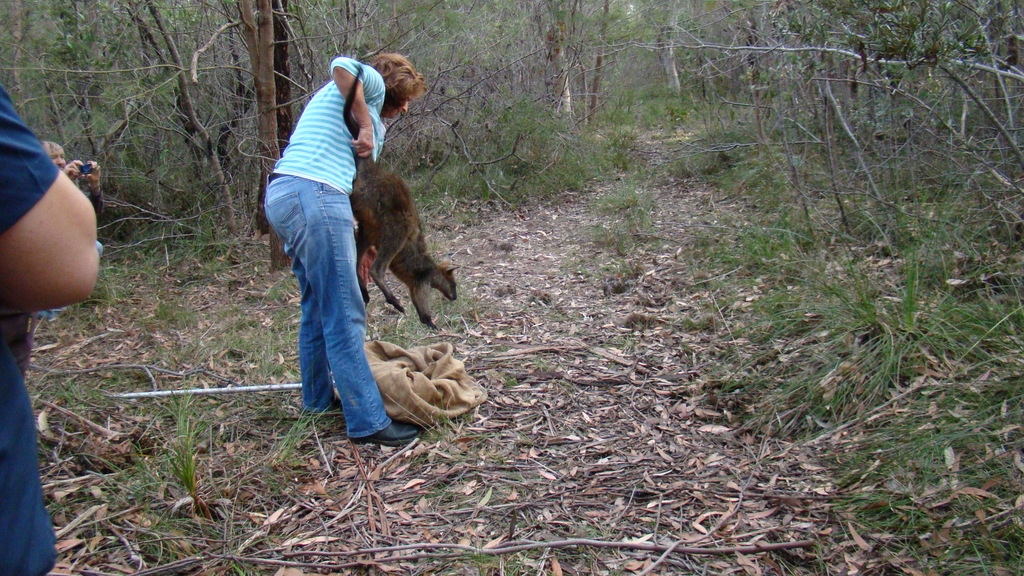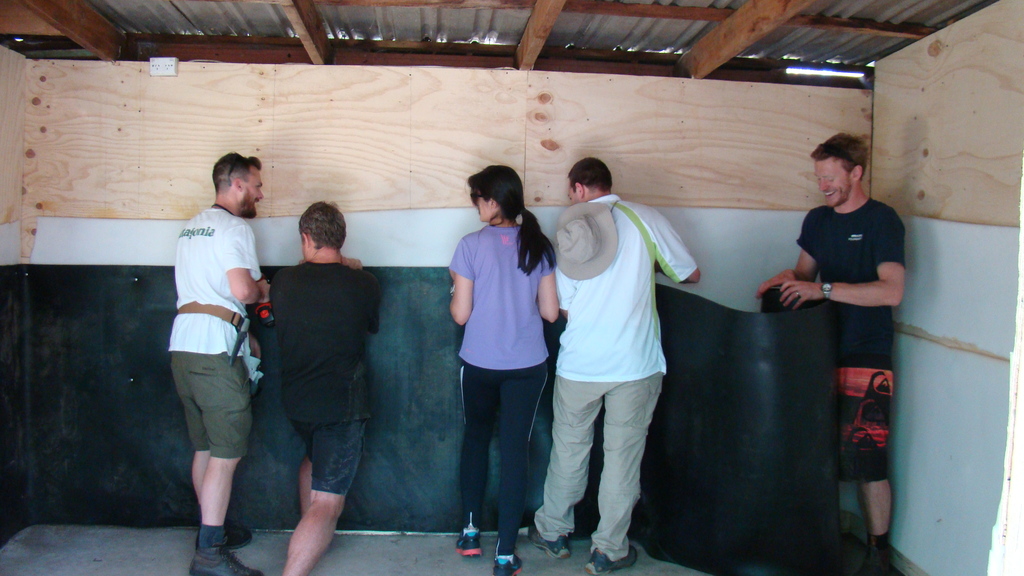April 12 - 25, 2020: Issue 446
Sydney Wildlife Waratah Park Rehabilitation Facility: 2020 Update
Discovering Sydney Wildlife
Film by Rebecca Spicer
The people at the volunteer organisation, Sydney Wildlife, were kind enough to share their time with me and a team of 4 other people. I was set with the task of creating a documentary about the organisation and what they do, and this was the end result. I hope you enjoyed it.
You can find the Sydney wildlife team on facebook under the same name and at their website www.sydneywildlife.org.au
A submission in favour of State Heritage Register listing of Waratah Park from Jenny Harris, 2017 Pittwater Community Service Awardee and then Secretary of the Duffys Forest Residents Association dated October 21st, 2104 stated:
'Duffys Forest Residents Association (DFRA) has been working tirelessly with volunteers from outside the community since November 2010 (under a Letter of Authority from Crown Lands) to suppress weeds and to support and promote resilience of bushland across the site. We have developed a significant database of volunteers now exceeding 150 people who volunteer at regular monthly working bees because of their emotional attachment to the 'Home of Skippy'.
'Volunteer contributions have exceeded 3500 hours since work began and the passion of these volunteers epitomises community sentiment that the home of Skippy should be preserved in perpetuity for all Australians and international visitors.'
A land claim on Waratah Park as Crown Land under the NSW Aboriginal Land Rights Act 1983 was successful and on August 28th, 2014, ownership of Waratah Park was transferred to the Metropolitan Local Aboriginal Council (Metro LALC). Metro LALC have plans to re-develop Waratah Park as centre for Aboriginal and environmental education. [1.]
The Land Council has been restoring the park, working with the Duffys Forest Residents' Association, using occasions such as National Tree Day (with Planet Ark, each July) to encourage community tree planting and activity on site.
Sydney Metropolitan Wildlife Services Inc., referred to as Sydney Wildlife, was launched in May 1997 by Newport lady Sonja Elwood, along with a large group of experienced wildlife carers, to meet the specific needs of urban wildlife in the Sydney metropolitan area. As the name suggests, Sydney Wildlife operates in the Greater Sydney Metropolitan Area which extends from the Hawkesbury River in the north, to Picton in the south and from the foothills of the Blue Mountains to the ocean.
As well as caring for sick, injured and orphaned native wildlife, Sydney Wildlife is also involved in educating the community about native wildlife and its habitat. From kindergartens to retirement villages, community education packages are tailored to meet the specific needs of a wide range of audiences.
Sydney Wildlife is an entirely voluntary, charitable organisation, meaning there are no paid staff what-so-ever, and the costs of rescuing, feeding, rehabilitating and looking after injured wildlife are met through donations or come from the pockets of the carers themselves. Sydney Wildlife is licensed to do the work it does by the National Parks and Wildlife Service under the National Parks and Wildlife Act, 1974. Sydney Metropolitan Wildlife Service Inc.'s registration number is: Y256271-5. Their charitable fundraising number is: CFN15835.
Within the organisation volunteers have educated themselves to fulfil looking after specific species as well as having the knowledge to care for all the feathered, furred, scaled wildlife they tend to.
Joan Reid - Volunteer Macropod Co-ordinator, recognised a need to provide a larger rehabilitation area for the wallabies, kangaroos and other macropod species carers were looking after in their own homes. In late 2012 she identified the Waratah Park site, where remnants of wildlife enclosures were available, as one that may work. In 2013 Joan listed the project on the GlobalGiving April Challenge - for a Rehabilitation Centre for Wallabies and Kangaroos at Waratah Park.
In May 2103 Joan reported:
Sydney Wildlife would like to say thank you to everyone that has donated to our project during the April Challenge. As we are 100% volunteer run organisation, we rely on the generosity of people like you.
We would also like to pass on our thanks to GlobalGiving for the opportunity to be a part of their network and all their support and training prior and during the April Challenge.
Now the work can commence on cleaning up the area and starting to purchase the required materials to build a secure rehabilitation enclosure for the Wallabies and Kangaroos.
In June 2013:
Up until now, our volunteers have had to care for and rehabilitate our injured and orphaned Macropods (Kangaroos and Wallabies) in their own homes and backyards. Sydney Wildlife has been lucky enough to secure a lease for part of Waratah Park (former home of "Skippy") and thanks to the funds we have received towards this project, we can now start building a suitable facility that accommodates their complex requirements before release.
Our hardworking volunteers have started to clean the area in preparation to build our facility for Macropods. We have spent several days clearing out sheds, mowing and weeding. These areas will become our rehabilitation facility and quarantine room.
On top of the physical work we have been doing, we have also been taking measurements and getting quotes to get the best price possible to build our facility.
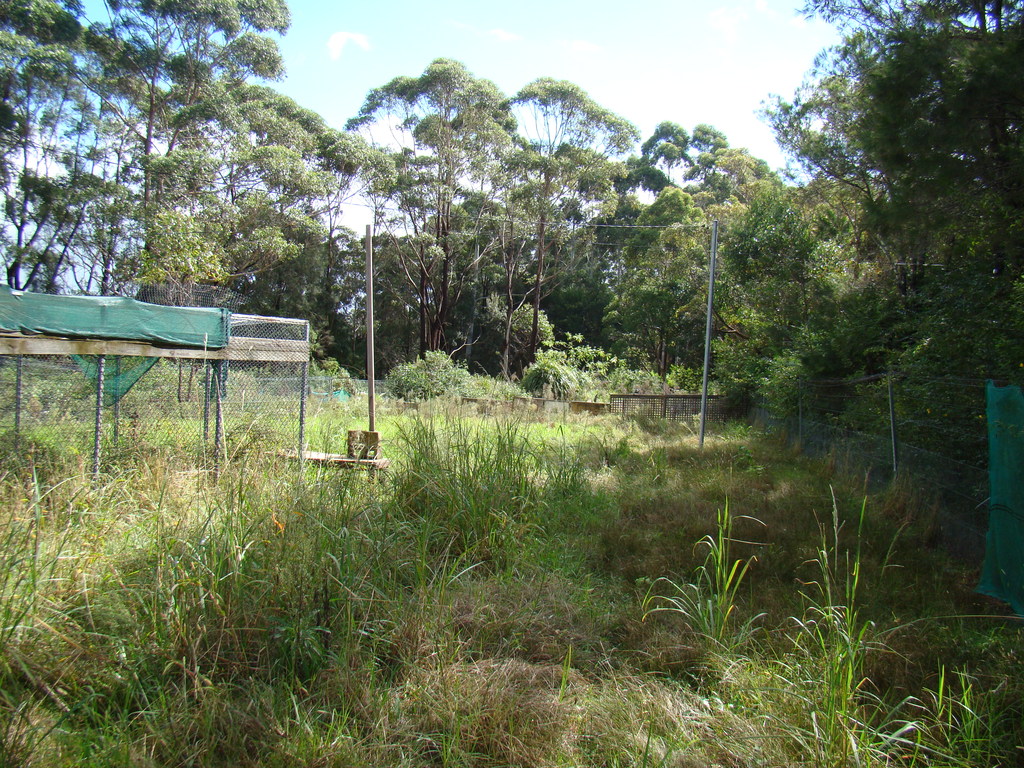
Our future rehabilitation area - June 2013
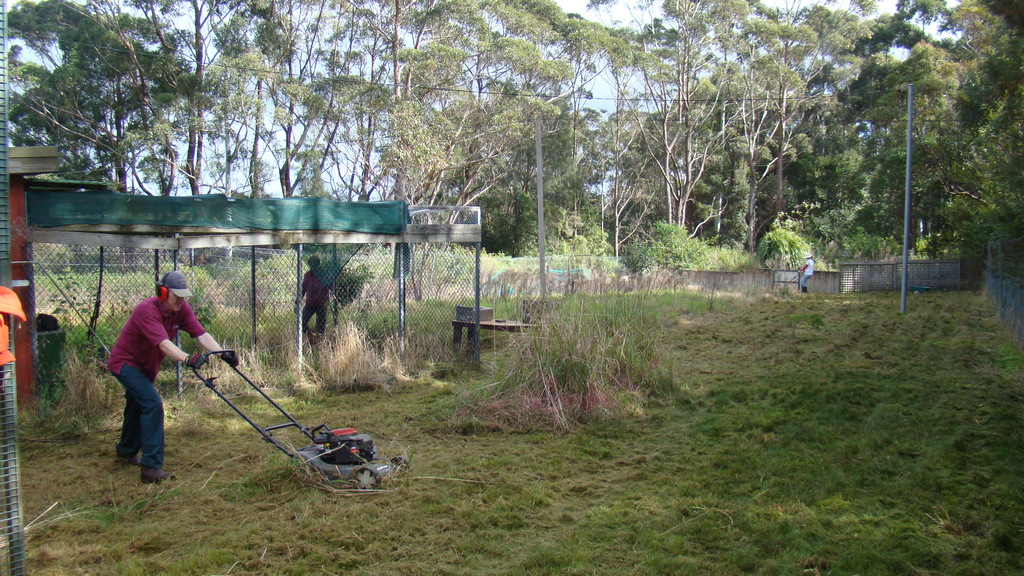
The clean up has started - June 2013
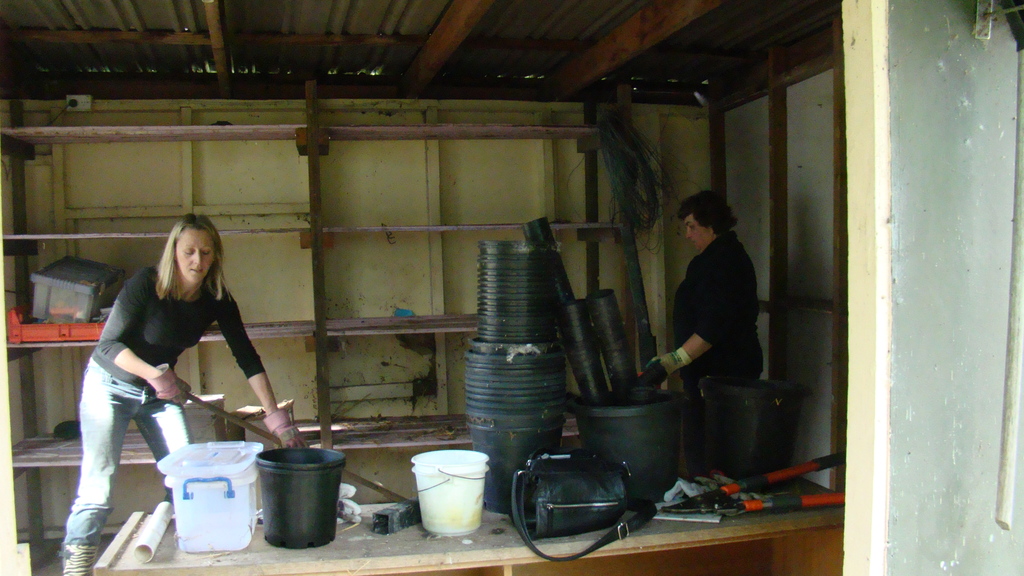
Believe it or not, our future quarantine room!! - June 2103
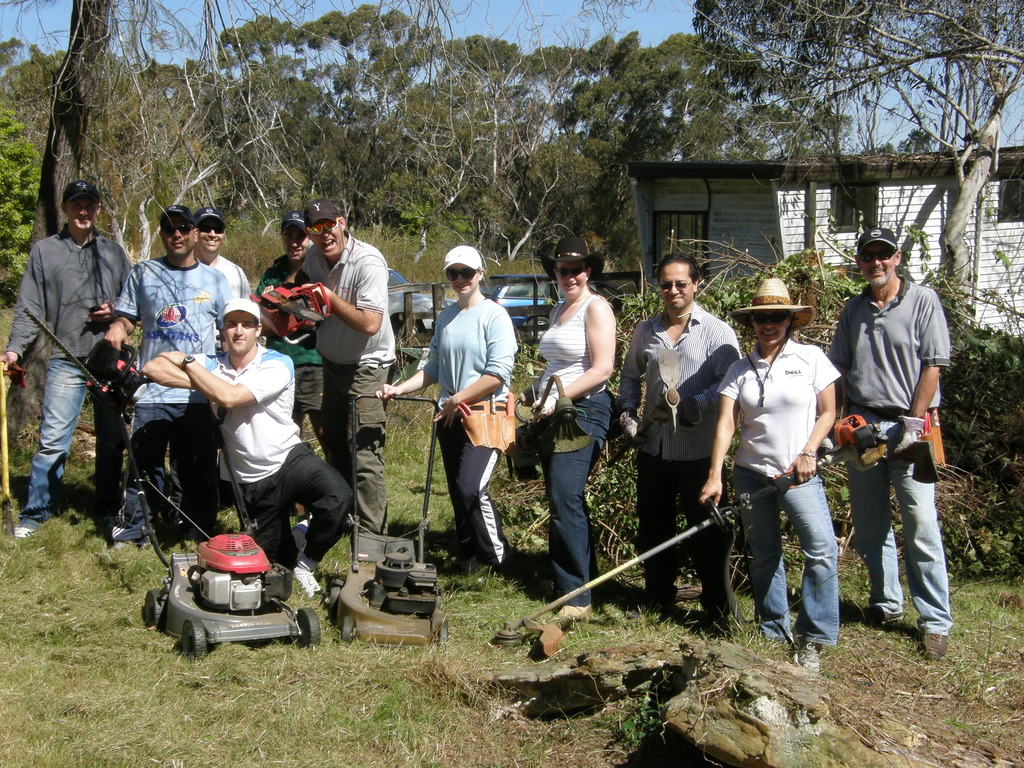
Some of our wonderful volunteer helpers - June 2103
The work continued, clearing the weeds, building fences and shelters for the macropods, installing shade cloths(volunteers needed to attach shade cloth as a visual barrier, otherwise macropods when frightened could try to hop straight through the fence to the bush on the other side of that fence and possibly hurt themselves in the process) and commencing to build the quarantine room with one of the first macropods being a Swamp Wallaby from our local area - from October 2013:
Rescue of a hit and run victim
Late one night a swamp wallaby was bounding through the bush alongside a busy main road. Wishing to cross to the other side, he jumped onto the road and collided with the side of a car. Sadly, the driver of that car did not stop. Thankfully, however, a kind man by the name of Matt saw the poor animal get hit and stopped immediately. He picked up the adult wallaby, wrapped it in a drop-sheet and drove all the way to a 24 hour animal hospital to get veterinary attention for the animal.
The wallaby was x-rayed and had a full examination. He was found to have head trauma, nystagmus (vision impairment – possibly as a result of the head trauma) and was poorly ambulatory. He was treated with the necessary medication and allowed to rest.
The next morning he was very quiet but did respond slowly to noise. He still had minimal response to light, indicating possible blindness. The vets wanted the wallaby to have a few days’ rest to ascertain whether or not the blindness was a temporary symptom of the concussion. A volunteer carer from Sydney Wildlife collected him that night and transferred him to their Macropod Rehabilitation Facility at Waratah Park. The wallaby was set up in the quarantine room. The poor thing just sat in the corner of the room with his head bowed.
The next morning, however, he seemed able to hop around, unsteadily, and his sight appeared to be slowly returning. Over the next few days, he began to hop around in the outside enclosure without bumping into obstacles.
Within one week he was back to being a normal wild swamp wallaby - thumping his feet on the ground as a warning if your approach was too close before taking off at great speed around the enclosure. It was decided that he could now be released back into the wild and hopefully would go on to live a long and carefree life.
Swamp Wallaby Hit and Run Victim in Rehabilitation - October 2013
Release of Swamp Wallaby - October 2013
Volunteers building the Quarantine room.
We are very lucky to have these magnificent creatures at our doorstep. If you are driving in the area, please drive carefully. If you do accidentally hit an animal on the road, please stop and check if it requires help. If the animal is a marsupial (an animal with a pouch) and is dead, it’s really important to check the pouch for live young. If you cannot take the animal to a vet please ring Sydney Wildlife on 9413 4300.
A year later the volunteers were building a catchment area in one corner of the rehabilitation enclosure. This allowed them to corral, catch, perform health checks and bag the wildlife for transportation to the release site.
Prior to release, they were micro-chipped to enable us to learn more about their survival after release. Sydney Wildlife notifies local vets of the micro-chipped animals released and asks them to check all sick and deceased macropods that come into their clinics. If they find a micro-chipped animal, they provide the details to Sydney Wildlife and we record this activity against their records. This allows us to get information on where they have gone and their survival rate once released back into the wild.
Volunteers also planted more native plants that will provide extra food for the macropods living in the facility and teach them how to graze. They also had plumbing laid so they can have a tap within the facility to make it easier to clean, water the plants and also refill the drinking troughs.
By October 2015 the facility was expanded to include all native wildlife, with Joan, co-ordinator reporting they had been very busy with quite a few different species being rehabilitated.
We were lucky enough to be able to assist in the final rehabilitation stage for three elusive Sugar Gliders. Prior to coming to our facility, they had been handraised by one of our wonderful Sydney Wildlife volunteer carers. Two of them came into care after their home was destroyed and one had been caught by a cat.
When they were approaching time for their release they were bought to our facility for rehabilitation where they stayed for a couple of months building up their muscle strength and foraging skills. As they are mostly active at night, we were able to watch them on the infrared motion activated wildlife cameras we purchased from your donations, this showed us how quick they were moving around the facility and successfully finding their food. Once it was determined they were ready to be released they were caught, weighed and then transported to the other side of Sydney for release back where they originated. The nesting box they used whilst in rehabilitation was secured in a suitable tree and they were put back into it giving them a familiar base to release from.
The release site was on a property where people could visually keep an eye on the movements of the sugar gliders. After release, they were seen returning to their box on and off before eventually disappearing to start their new life.
A few insights from Joan Reid from the Pittwater Online 2016 Profile on the Sydney Wildlife Waratah Park Rehabilitation Facility:
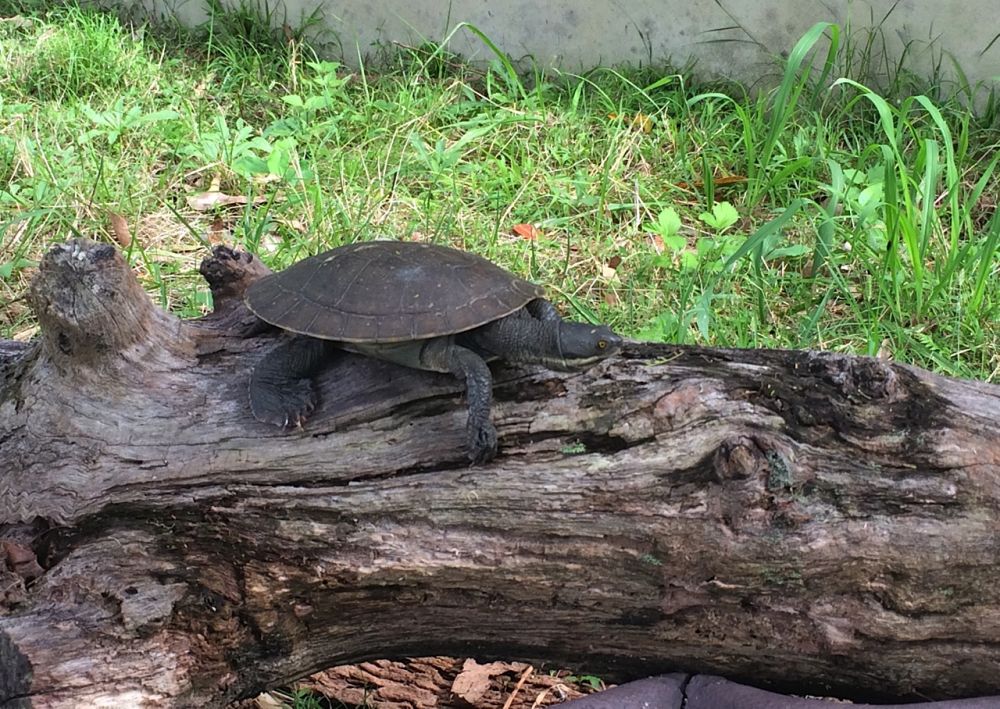
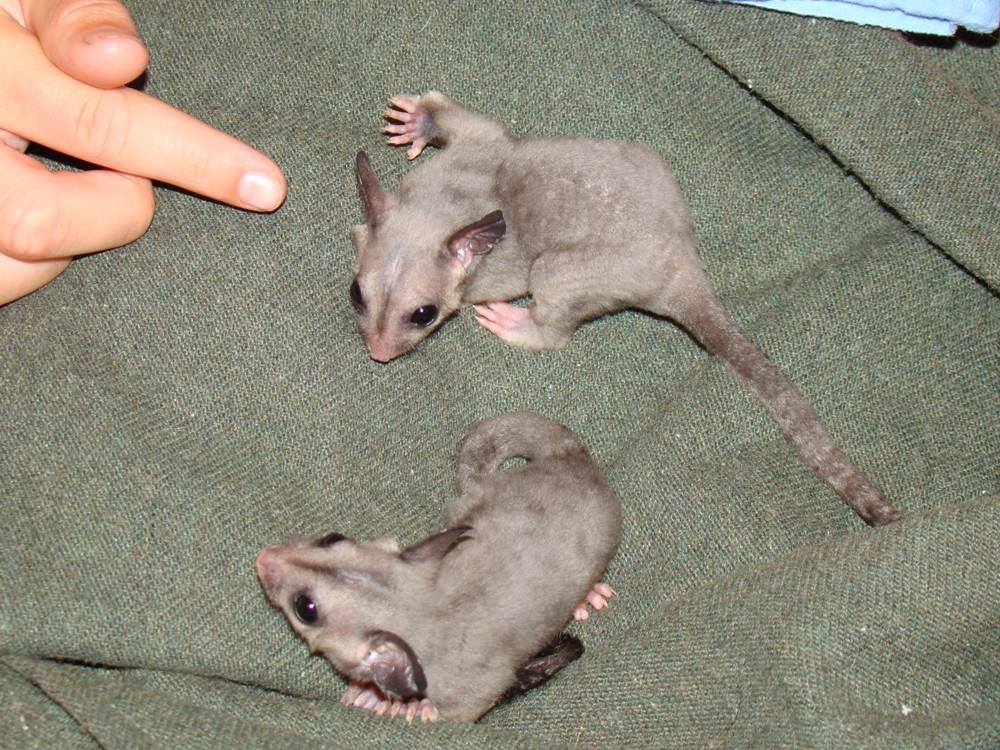
If anyone would like to become a sponsor and have their name on our van please email info@sydneywildlife.org.au or call Sydney Wildlife on 9413 4300
The work went on of course, with Joan speaking about a Mobile Unit to regular columnist of all things wild Lyneligh Greig, after carers responding to bushfire wildlife victims far from here found a better way to do it would be to take an 'animal ambulance' to these scenes of devastation. The most recent fires of 2019-2020 have shown that although we have lost too many of our native animals, without the work of these volunteers, the loss would have been far greater.
The Sydney Wildlife Waratah Park Rehabilitation Facility and Sydney Wildlife Mobile Unit report from February 2020:
Sydney Wildlife have been very busy lately as I am sure you can imagine. Besides going to the fire grounds with our Mobile Care Unit, we have also been looking after fire affected wildlife and providing support to other wildlife organisations.
One of our members commandeered a plane that was going to Kangaroo Island. Kangaroo Island has also been badly affected by the recent fires.
Lorraine (Sydney Wildlife Volunteer) had the great idea on Friday afternoon to fill up the private plane that was headed to Kangaroo Island the following Tuesday with much needed supplies. Lorraine got in contact with the Ranger who advised that RSPCA were in charge of the rescue efforts on Kangaroo Island and the emphasis was feeders, boxes, pouches, medical supplies and feeding/water equipment. The supplies were needed mostly for smaller mammals, reptiles and birds so Margaret (Sydney Wildlife Volunteer) posted on a number of Facebook groups asking for help and contacted our support team at ARC (Animal Rescue Cooperative). In just 3 days the Sydney Wildlife volunteers had sourced, collected and filled the plane with much needed supplies.
Mission accomplished!! Once the plane landed, all the feeders, watering systems, possum boxes and medical supplies asked for were handed to the RSPCA to use and distribute to other wildlife groups.
In another fire related trip we ended up in Lithgow where we were part of a search and rescue team comprising of people from RSPCA, Animals Australia, World Vets, WIRES and of course Sydney Wildlife Rescue.
Sydney Wildlife have also had the honour of working with Dr Oakley (Yukon Vet), Dr Peyton and her husband and Professor Johnson, all the way from the USA.
Working with Wildlife Rescue South Coast again we have been able to check up on our original patients to see their progress over the past weeks and do some new fish skin treatments on their burns that Dr Jamie applied.
Dr Peyton is an award-winning burns specialist who is using ground-breaking methods on burns victims.
It has been a horrible and heart breaking summer here in Australia but gladly as I sit here today writing this it is raining heavily which I hope puts out all the fires and fills our dams.
Thank you all for your continued and wonderful support as we can't do what we do without your donations.
While on those donations, it is important to emphasise that Sydney Wildlife receives no grants nor funding from any government organisation at local, state or federal level. The food bill alone a few years ago was 30 thousand dollars annually, all paid for through donations. The wildlife also need dressings, medicines, cloth pouches and bat wraps, food drops after the fires as well as water stations being installed, and thankfully, at least locally, has had the support of wonderful veterinarians such as Howard Ralph prior to his moving south and the great vets at the Mona Vale Veterinary Hospital, Northside Veterinary Specialists (NVS) at Terrey Hills, Collaroy Plateau Veterinary Hospital and Terrey Hills Animal Hospital and Sydney Wildlife's own Anne Jackson who started up MediDivert - a system whereby unused medical supplies from Hospitals are diverted away from landfill to where they are needed most, as well as countless local builders and companies who have worked, shed sweat, building and repairing the Sydney Wildlife Waratah Park Rehabilitation Facility.
During the current COVID-19 'stay at home' safety measures volunteers are still working to rescue, care for and rehabilitate our wildlife.
If you find any animal needing help please call the Rescue/Advice line on 9413 4300.
If you can forgo a cup of coffee two days in a row, or for a whole week, that will provide formula for a wallaby for a month. Please visit: https://www.globalgiving.org/projects/sydney-wildlife-rehabilitate-wallabies-and-kangaroos/ and http://www.sydneywildlife.org.au/
One of the best ways to distract yourself from any worries you have is often to invest that same energy in doing something positive for something or someone else. Although, due to the Covid-19 / Coronavirus Sydney Wildlife's Rescue and Care Course in May has been cancelled. Until such time as the next Rescue and Care Course is held (possibly in August), please consider some other really valuable and important ways that you can volunteer with Sydney Wildlife, such as:
Volunteering your time another way
There is a lot more to Sydney Wildlife than hands-on Rescue and Care animal work. Animal lovers at all levels of fitness and expertise are needed for these jobs within the organisation:
Working on the Helpline
Sydney Wildlife need volunteers to help on their Emergency Helpline - filling four-hour shifts, answering calls from the public. From 9am to 5pm, calls are taken in our Head Office in Lane Cove National Park. With the proper training, you may wish to volunteer directing rescuers to the animals in need.
Collect Foliage or Cut Fruit for Animals in Care
You may not have time or space to care for wildlife at home but you can help those who do. Foliage is constantly needed as food or habitat for animals in care. A local, willing pair of hands to gather the particular ‘browse’ required or cut fruit for rescued bats in care lets a carer concentrate on tending the animals.
Jack-of-all-trades
Sydney Wildlife always needs nesting boxes designed, constructed or installed; donated aviaries transported, erected or adapted; modification and improvements to any and every aspect of infrastructure that helps them do what we do. Tell them how you can help.
Animal transport
Whether moving boxed injured animals from a member of the public to a vet or taking an animal from the vet to a carer, you are improving its chances of survival. This work is invaluable and could suit someone who enjoys the interaction and wants to lighten the load for the busy carers.
Register to offer yourself for one of these valuable contributions and someone will contact you with further details - Fill out the registration form under "Become a Carer" "Upcoming Courses". OR - Email training@sydneywildlife.org.au if you think you can help in a different way.
Here are some examples of who you will be helping - a couple of cheeky wombats from last Summer's fires currently at the Sydney Wildlife Waratah Park Rehabilitation Facility - they have been named Mitch and M.J. by the volunteers and soon will be big and strong enough to return to their homes - as well as the antics of Coco, a Swamp Wallaby currently in care.
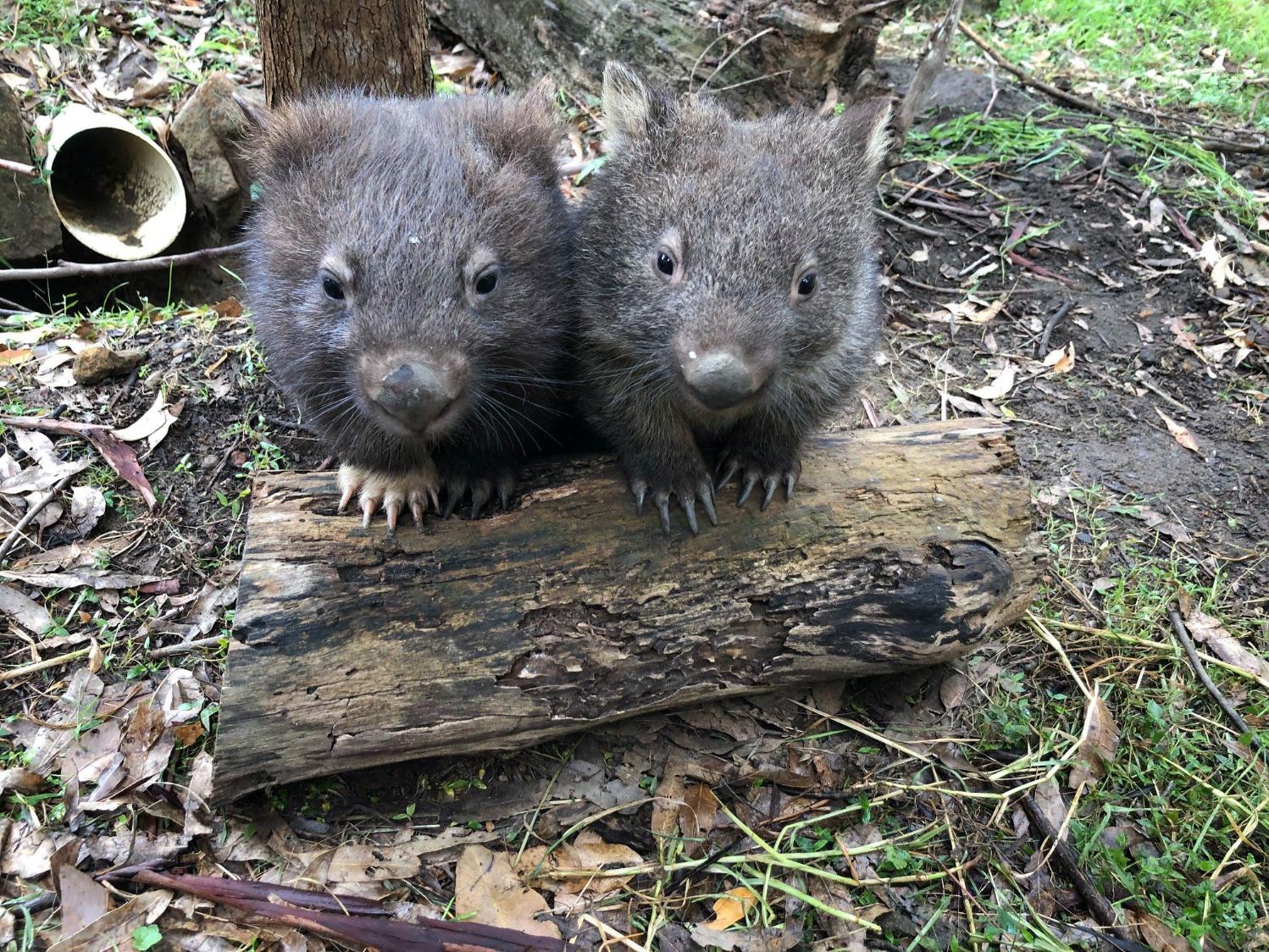
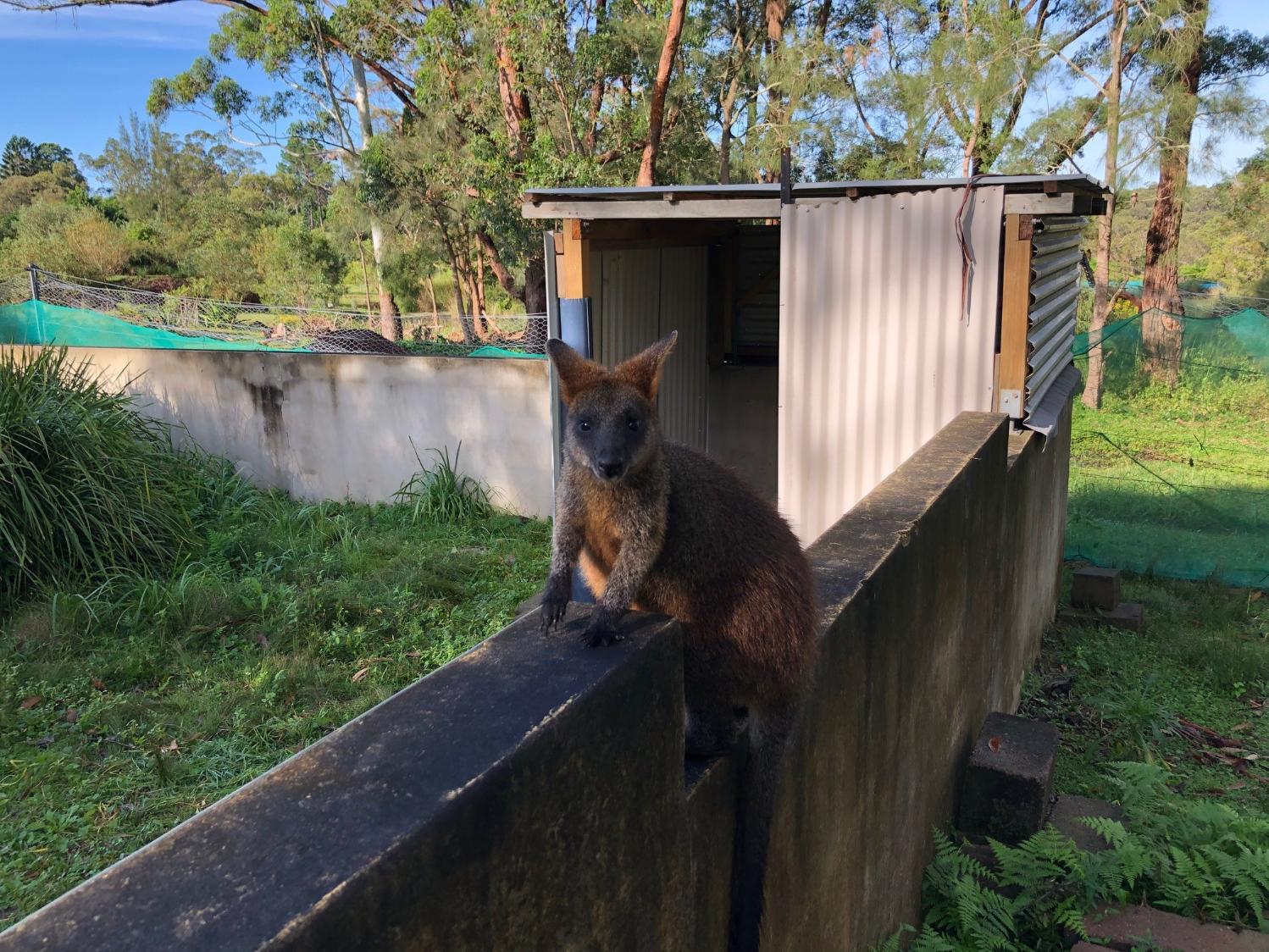
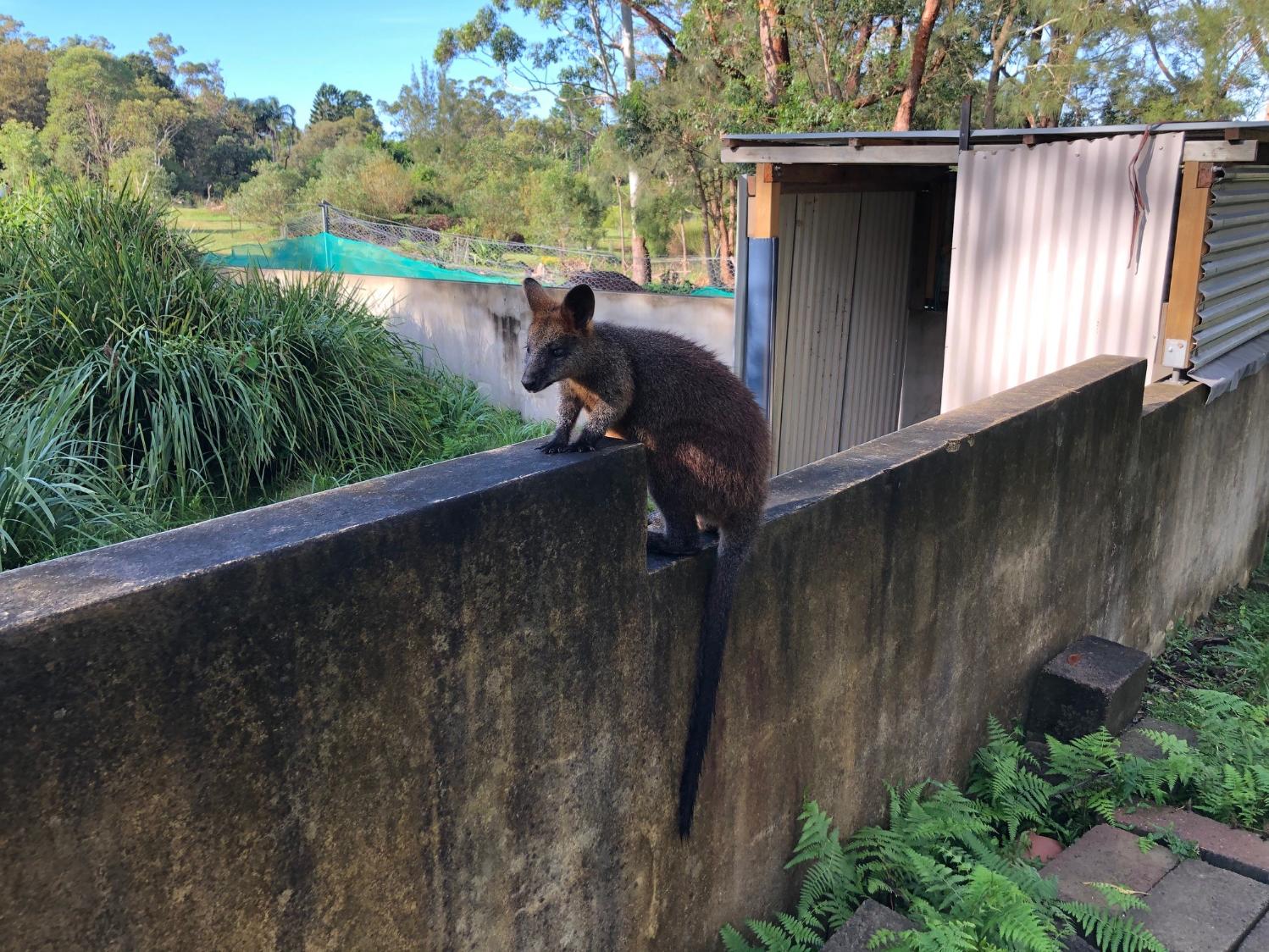
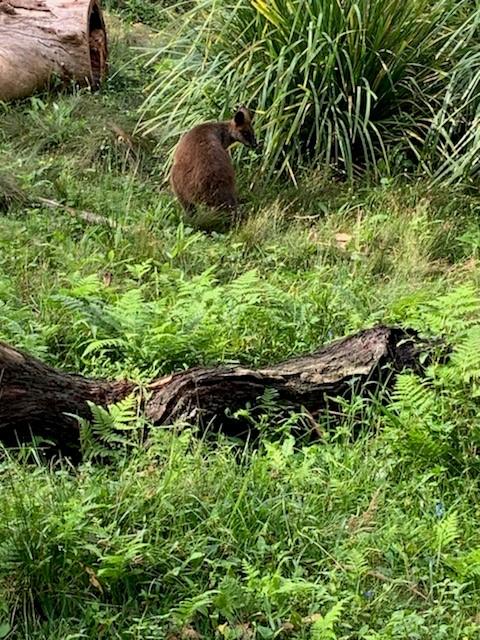
Some before and after pictures:
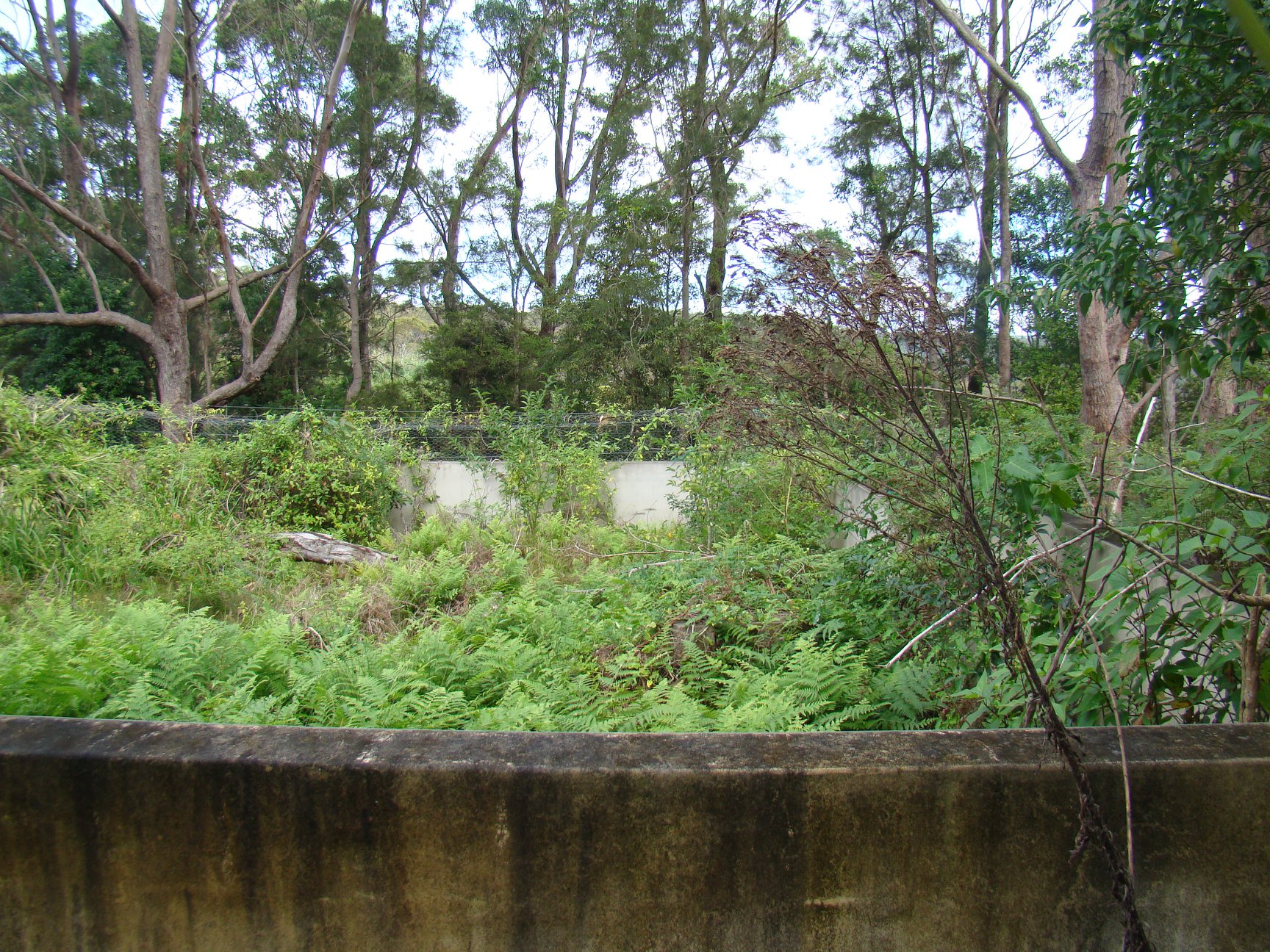
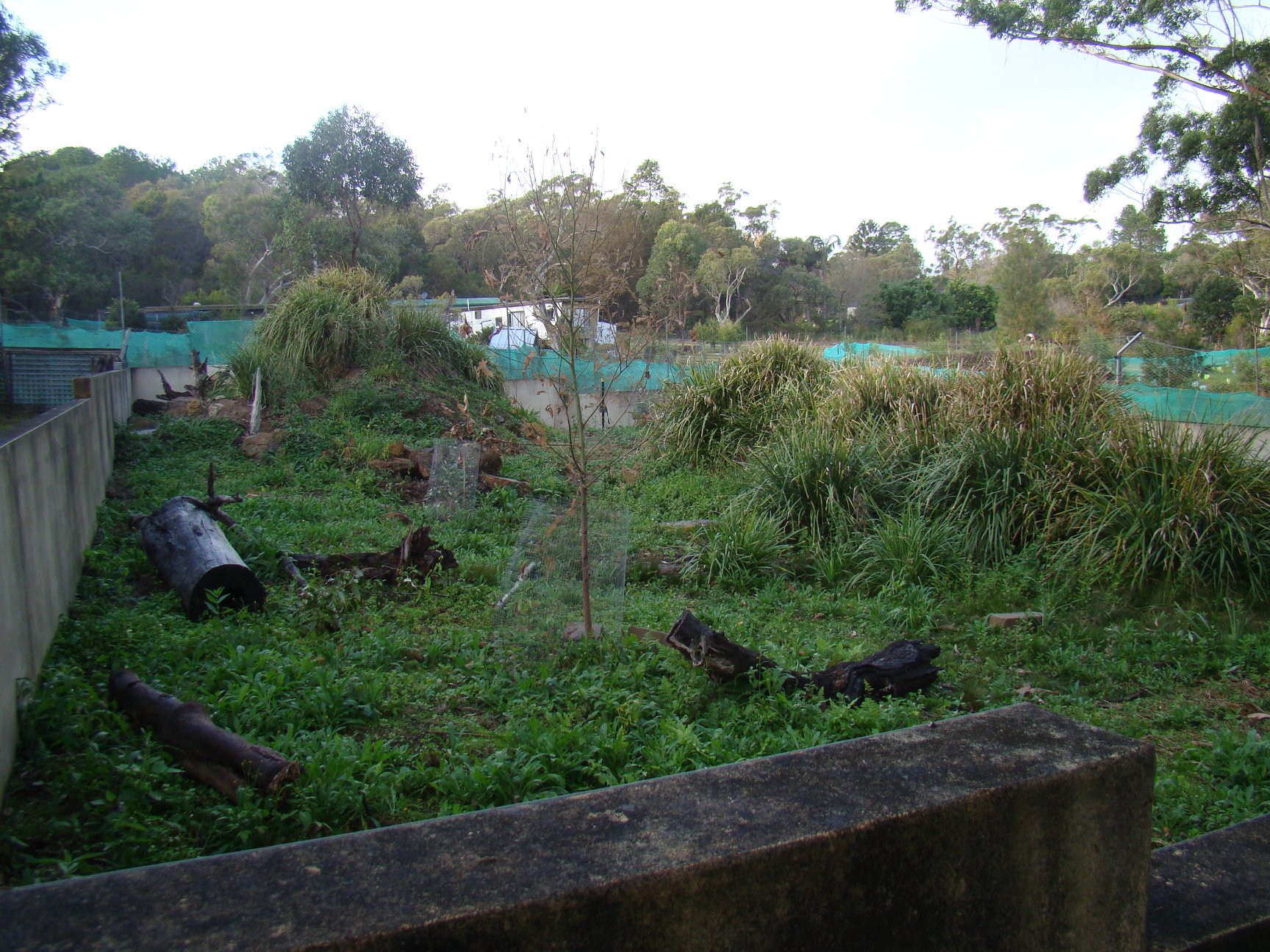
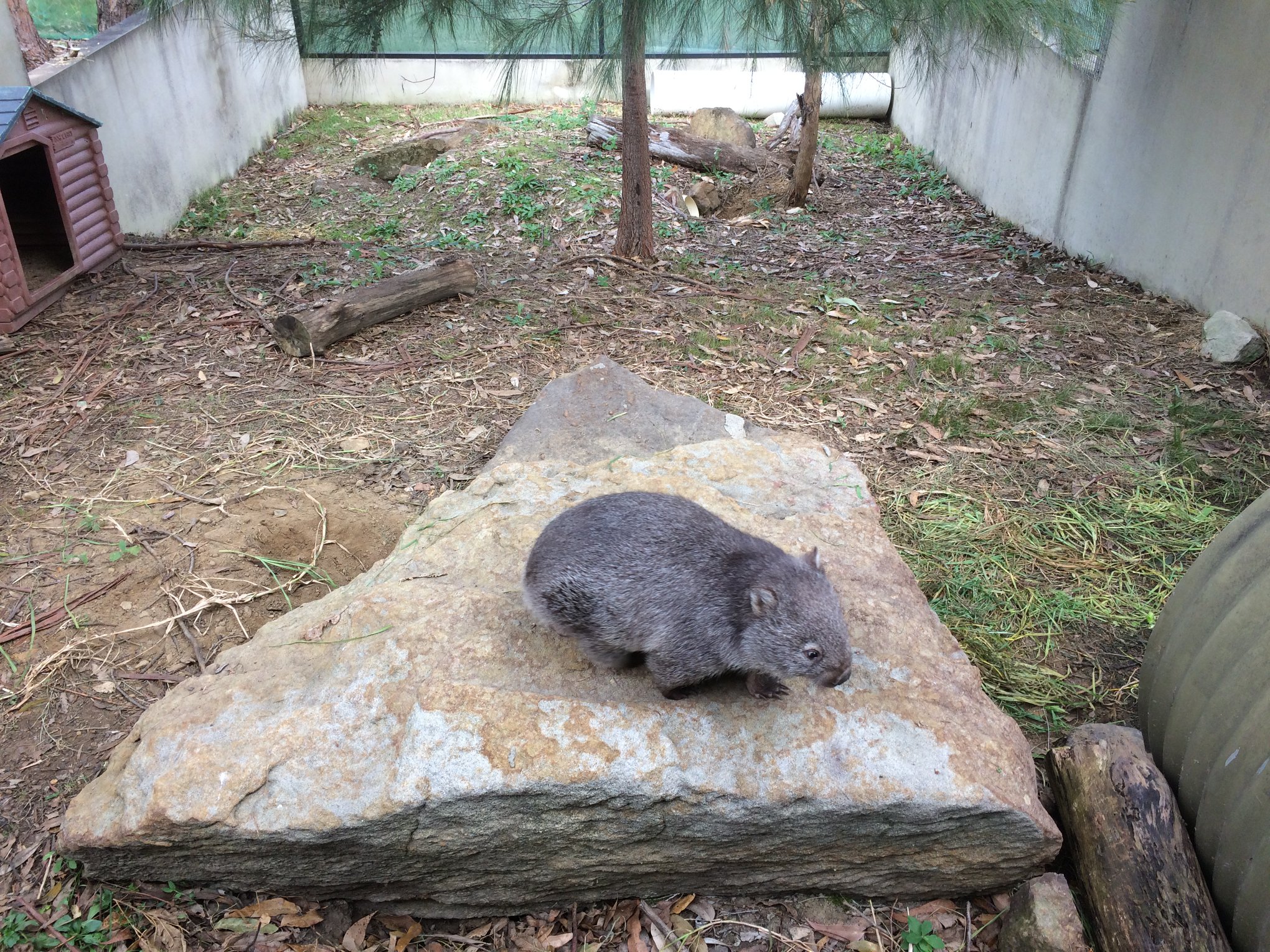
Thanks to Metropolitan Local Aboriginal Land Council (MLALC) in allowing Sydney Wildlife to use some of their land for a rehabilitation facility, these lovelies get the kind of care they need to grow well again and return to the bush. All they need along the way is lots of care from the trained volunteers and medicines and food.
Currently there are 3 fire-evacuated kangaroos and 2 wombats from the fire grounds. The volunteers also have channel bills, swamp wallabies, a red-necked wallaby and possums as well as an adorable lace monitor in care.
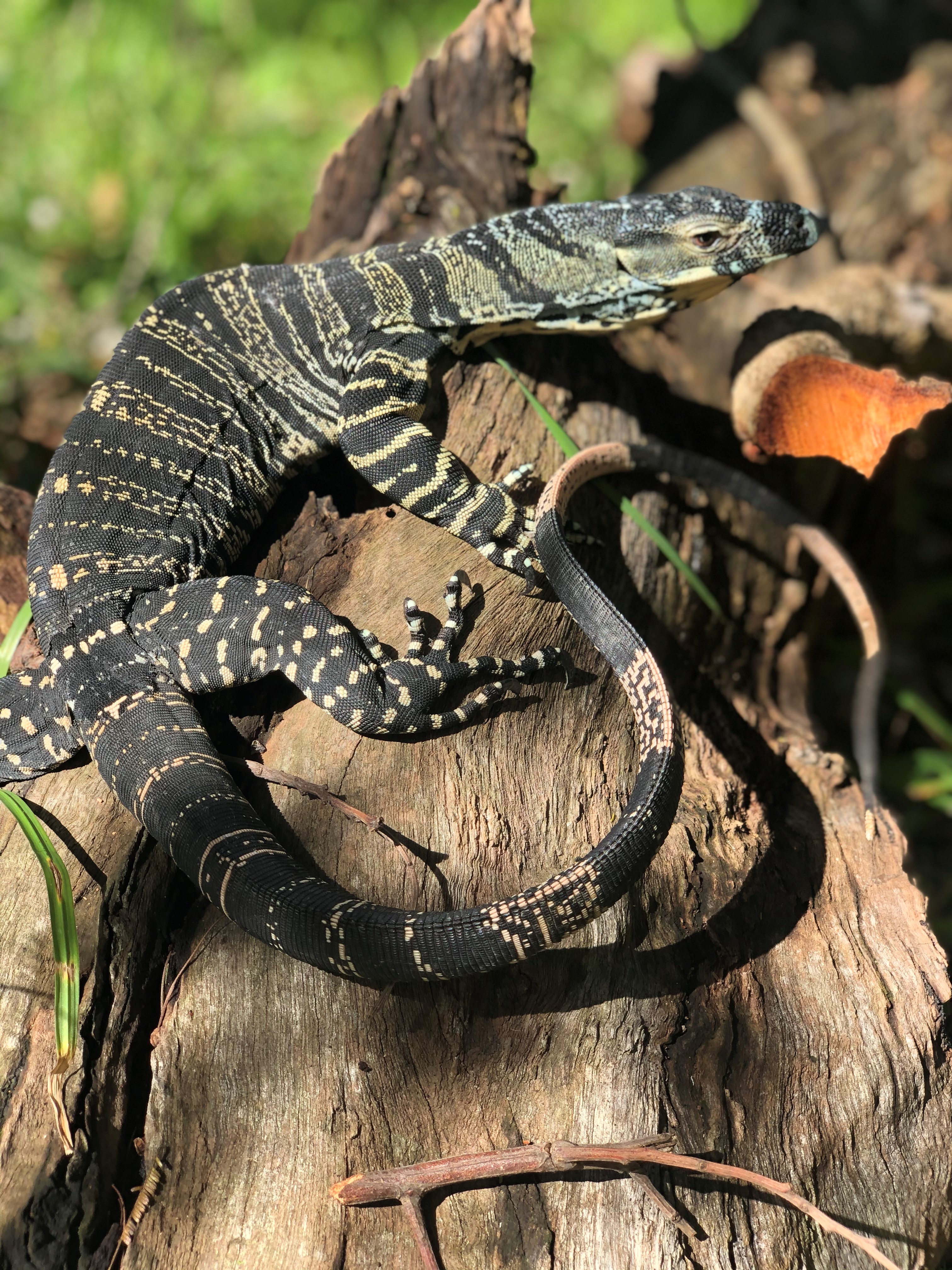
The Lace Monitor
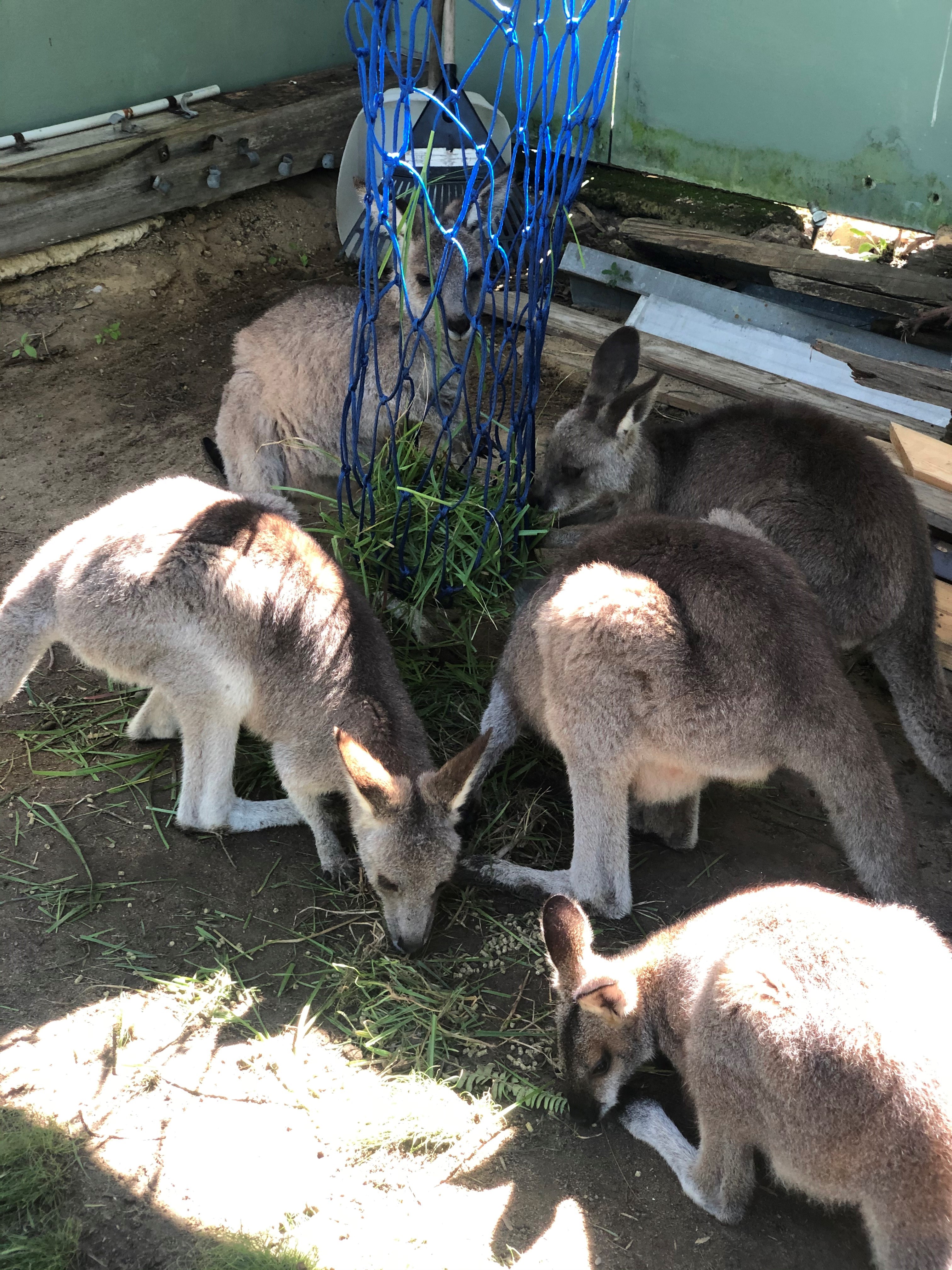
Macropod Feeding time
Every furry, feathered and scaled animal has its own personality - just like us humans. This is 'Waldo', one of the wombats that was in care in February thinking about making a Great Escape - as soon he will, back into the great outdoors:
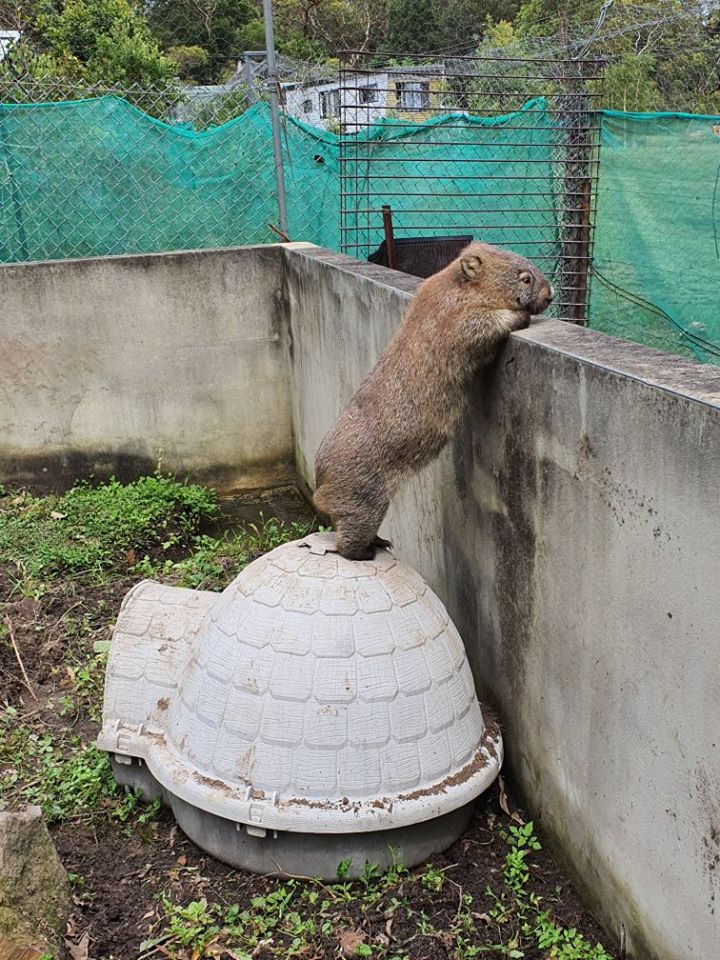
About Sydney Wildlife
Sydney Metropolitan Wildlife Services (Sydney Wildlife)is a non-profit wildlife organisation operating under licence from NSW National Parks and Wildlife Service.
Our goals are the rescue, rehabilitation and release of injured and orphaned native wildlife as well as educating the community about wildlife and habitat preservation. Prospective members must complete a two day weekend, Rescue & Care Course. On successful completion of the course trainees become members of Sydney Wildlife and are issued with an annually renewable authority to rescue and foster care a range of native wildlife including a wide range of native birds, adult possums, turtles and lizards. Once new members have gained some experience, further training is available for those wishing to care for baby animals and/or a range of other species such as bats, snakes, macropods (such as wallabies and kangaroos) and raptors.
Members must be at least 18 years of age and are required to be available for animal rescues when possible and to care for wildlife in their own homes. Members are also expected to meet the costs of travel and animal food and equipment and to commit to working on Sydney Wildlife's Rescue Line. The Rescue Line is operated from our office in Lane Cove National Park from 9am to 5pm 7 days a week. From 5pm to 9am, the After Hours Rescue Line is operated by members from their own home.
Answering the Rescue Line is interesting and rewarding - exposing members to a wide range of scenarios and rescue situations. The Rescue Line is the lifeblood of our organisation - if the phone isn't answered, animals don't get rescued.
Attendance at the Rescue & Care Course costs $140 which includes a wide range of resources including the Course Manual, Bird Care Manual, a Bird Identification Book, rescue basket and emergency food packs. Two people residing at the same address and sharing course materials are offered a reduced fee of $100 per person.
This course is specifically designed for people wishing to become members of Sydney Wildlife and to actively rescue and care for native wildlife. It is not a general education course and is not suitable for those intending to work professionally with animals or who are seeking a prerequisite for entry into another course.
Prior to enrolling, please think carefully. Wildlife rescue is not for everyone. While it can be extremely rewarding, it can also be time consuming and sometimes distressing.
Members need to be able to handle animals confidently and to accept that in some cases, the animals they encounter may die or have to be euthanized.
If you have any questions, please call one of our friendly volunteers at our office for a more detailed discussion. If, however, you believe you have what it takes, click on the "Registration Form" button here
If you have any further enquiries, email to training@sydneywildlife.org.au or call our office on 9413 4300 to leave your details for an information package to be mailed or emailed to you.
Also Available
- Sydney Wildlife Profile
- Sonja Elwood Profile
- Lynleigh Greig Profile
- Kayleigh Grieg Profile
- Sydney Wildlife Rehabilitation Facility at Waratah Park 2016 Profile
- Success Beyond Belief - Sydney Wildlife's Wallaby and Kangaroo Rehabilitation facility at Waratah Park is set to expand and needs our help by Joan Reid - Macropod Co-ordinator
- Front Page Issue 207
- Swapping Business Suits for Gardening Gloves by Lynleigh Greig
- The Brady Bunch or the Shady Bunch? by Lynleigh Greig
- Animalia Of Australia: Protecting Wildlife From Pets by Kayleigh Greig, Age 13
- Pittwater Volunteers Volunteer all Year Round - Volunteer Week 2015
- Dr. Howard Ralph of Southern Cross Wildlife Care is the 2013 NSW Senior Volunteer of the Year! Front Page Issue 140
- Possum High Tea at Coomalong to Support Southern Cross Wildlife Care
- Bandicoots: Friends Or Foes? by Lynleigh Greig, Sydney Wildlife
- Spring-Time = Snake-Time by Lynleigh Greig
- Grey Headed Flying Foxes by Kayleigh Greig
- Mac Attack by Lynleigh Greig
- The Wombat Warrior by Joan Reid
- Sydney Wildlife - Our Year in Pictures by Lynleigh Grieg
- Rescue, Rehabilitate and Release by Lynleigh Greig
- A Week In The Life Of A Sydney Wildlife Volunteer by Lynleigh Greig
- A Week In The Life Of A Wildlife Rescuer - Part 2 by Lynleigh Grieg
- SCWC Critters of the Month - 2013 SCWC Critters of the Month 2014 SCWC Critters of the Month 2015 SCWC- Sydney Wildlife Critters of the Month 2016
- Sydney Wildlife Mobile Clinic Fundraiser at Bayview
- Sydney Wildlife Builds Rehabilitation Flight Aviary for Southern Cross Wildlife Care
- Who Have Your Donations Helped This Month?: Tawny Frogmouth Chicks By Joan Reid, Volunteer Macropod co-ordinator Sydney Wildlife’s rehabilitation facility at Waratah Park
- The Year of the Snake by Lynleigh Greig
- Front Page Issue 155
- Champion of All Australian Wildlife Dr Howard Ralph Supported by Annual SCWC High Tea, Sunday April 6th at Coomalong by Lindy Stacker and Lynleigh Grieg
- Powerful and Precious by Lynleigh Grieg
- Toddy the Intrepid Turtle...! by Lynleigh Greig
- Snakes On the Northern Beaches Slithering out for Spring by Lynleigh Greig
- Success Beyond Belief - Sydney Wildlife's Wallaby and Kangaroo Rehabilitation facility at Waratah Park is set to expand and needs our help by Joan Reid - Macropod Co-ordinator
- Front Page Issue 207
- The Brady Bunch or the Shady Bunch? by Lynleigh Greig
- Springtime Slitheries by Lynleigh Greig (Southern Cross Wildlife Care) - a guide to snakes on the Northern Beaches
- Baby Birds by Lynleigh Greig, Southern Cross Wildlife Care - what do if being chased by a nesting magpie or if you find a baby bird on the ground
- Our Christmas Wish - by Lynleigh Greig
- Pittwater's 2016 Australia Day Awards
- When One’s Alarm Clock Says Hiss, Not Beep, You’re At Kayleigh’s House! by Kayleigh Greig - Pittwater Young Citizen of the Year
- No to Netting! by Lynleigh Greig - Southern Cross Wildlife Care
- Sydney Wildlife’s facility at Waratah Park: For All Creatures Great and Small - March 3rd, is World Wildlife Day 2016, theme is: “The future of wildlife is in our hands.”
- Pouch-Checking Our Marsupials by Lynleigh Greig
- Mobile Wildlife Clinic Fundraiser for Sydney's Northern Beaches: Please Help Save Our Resident Sick and Injured Animals
- ‘Wanda' The Wildlife Mobile Clinic by Lynleigh Greig
- What Makes Echidnas So Unique? by Lynleigh Greig
- Bill To Facilitate Mona Vale Road Upgrades Passes: Vital Fauna Bridge Discussed - Stage 3, Mona vale Road Upgrade- West, one step closer
- Wildlife Protectors by Kayleigh Greig
- Come To The Star-Studded Event Of The Year: The Go Wild Gala! by Lynleigh Grieg
- The Long Hop to Freedom by Lynleigh Grieg, Sydney Wildlife
- Going Wild For The Wild Ones! by Lynleigh Greig - fundraising for the Sydney Wildlife Mobile Clinic has gone over halfway - see the social and fundraising event pictures of the season and find out how you can help make the Sydney Wildlife Mobile Clinic a Reality
- Christmas Cheers From The Critters by Lynleigh Greig
- Wildlife Wins! by Lynleigh Greig
- Snake Babies by Lynleigh Grieg
- Sonja Elwood Nominated To Be A Women In STEM Calendar Girl: What Does A Lady Scientist Look Like?
- Sydney's First Fauna Overpass To Be Installed On Mona Vale Road+ RMS March 2018 update + Front Page Issue 353
- Painted Button-Quail Rescued By Locals - Elanora-Ingleside escarpment-Warriewood wetlands birds
- Sydney Wildlife's Waratah Park Rehabilitation Centre: 5 Years in the Making (A Celebration) by Joan Reid, Volunteer Macropod co-ordinator
- Cliff-Hanger by Lynleigh Greig
- It’s Time To GO WILD Again!: The 2018 Sydney Wildlife Garden Party and Garden Gallery - October 28th by Lynleigh Greig
- Wildlife Champion Setting A Cracking Pre-Spring Pace: August 2018 with a bad bushfire season forecast and new babies set to hatch soon, a glimpse into just a few days of what's been happening here this week
- Sydney Wildlife Totally Wild 2018 Fundraiser Achieves Mobile Clinic Liftoff! by Lynleigh Greig
- Summer In Pittwater: January 2019 -
- Cloudy by Lynleigh Greig
- Sydney Wildlife Northern Beaches Branch: Our Year in Pictures 2019
- Wildlife Wins! by Lynleigh Greig
- Sydney Wildlife Mobile Clinic's Inaugural Run Into The New South Wales Firegrounds Has Been Supported By The World's Leading Wildlife Organisations and Carers: January 2020
- Warm Fuzzy Cuddles: Mitch And M.J. - Wombats At Sydney Wildlife Waratah Park Talk To You- For Littlies (& Biggies Too) - Photos by Margaret Woods, Joan Reid and Lynleigh Grieg - '2 kangaroos' photo by Victoria Reid.
